Opinion by Alan J. Chwick

Lately, I’ve been questioned why my neighbor’s pocket pistol has been jamming.
On inspection and questioning, I discovered that my neighbor had bought some hollow point ammo for his ‘old’ .32 ACP pocket pistol. And therein lay the problem.
.32 ACP (Automatic Colt Pistol) Cartridge
The .32 ACP (Automatic Colt Pistol) cartridge is one of the most widely known and historically significant handgun calibers. Initially developed by John Browning and introduced in 1899 for his Colt Model 1903 pocket pistol, the .32 ACP has seen continuous use in a variety of firearms, both military and civilian. It is a small caliber cartridge, often seen as a balance between ease of use, relatively low recoil, and adequate stopping power in a self-defense weapon.
Despite its status as a “pocket” caliber, the .32 ACP has been the subject of a number of technical challenges, one of the most significant being the issue of “rim lock,” a malfunction particular to certain pistols chambered in .32 ACP.
The .32 ACP cartridge itself, as designed by Browning, is a relatively simple round, with a bullet diameter of .312 inches, a cartridge length of about 0.680 inches, and a small extraction rim. It was designed to work in the small, compact pistols that were becoming increasingly popular at the turn of the 20th century. It was an ideal choice for personal defense pistols, particularly for those who desired a small, easy-to-carry weapon for concealed carry. Its popularity extended to law enforcement and military forces in various countries, and the .32 ACP continued to be produced in significant quantities throughout the 20th century.
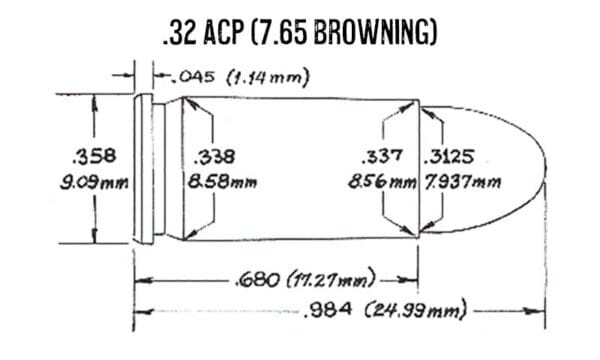
Over the years, the .32 ACP cartridge has been chambered in numerous pistols and revolvers from various manufacturers around the world. In addition to the Colt Model 1903, the cartridge was adopted by a number of other notable handguns, including the Walther PP, the Beretta Model 3032, and the CZ-70, to name just a few.
The most notable mechanical issue associated with the .32 ACP cartridge is the phenomenon known as “rim lock.”
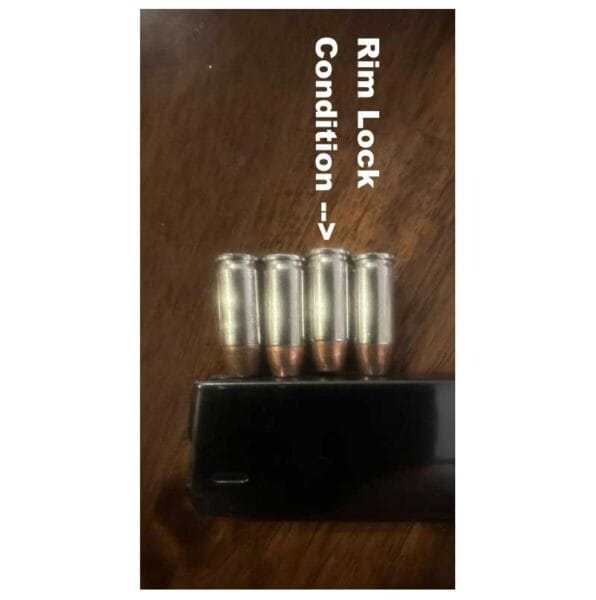
What is Rim Lock?
Rim lock occurs when the cartridges in a magazine become misaligned due to the shape and arrangement of the rimmed cartridge, preventing a round from feeding properly into the chamber.
Rim lock happens when the cartridges in a magazine are not correctly oriented due to the interaction of the cartridge rims. In a properly functioning magazine, cartridges are stacked neatly on top of each other, and each cartridge is fed smoothly into the chamber during the firing cycle. In certain pistols, however, the rims of the cartridges can become “locked” or misaligned, preventing one cartridge from feeding into the chamber.
The problem arises because the .32 ACP cartridge has a very small rim in comparison to the case body. Its lack of a pronounced rim or a tapering profile, especially when using a magazine with a straight-feed design, increases the potential for this malfunction. When cartridges are stacked in a magazine, one or more may shift, causing the rim of one cartridge to catch on the base of another.
This results in a failure to feed and may cause a jam or misfire in the firearm.
The first documented occurrences of rim lock were noted in early semi-automatic pistols chambered in .32 ACP, such as the Walther PPK. Introduced in 1931, the PPK was one of the most popular pistols to use this cartridge. It was an elegant and compact design, but early versions exhibited issues with rim lock. When cartridges in the magazine failed to feed properly, they would often fail to fire, which could be dangerous, particularly in defensive situations.

Rim lock was a particularly vexing issue for users because it was not always predictable. In some cases, the problem occurred intermittently, often depending on the quality and design of the magazine and the condition of the ammunition being used. While rim lock is rare in modern versions of the .32 ACP pistols because of very specific designs, it was more prevalent during the early years of the cartridge’s use due to less advanced magazine and pistol designs.
Early manufacturers responded to the rim lock issue in various ways. One of the most common design solutions was the adoption of a tapered magazine, which allowed the cartridges to sit in a more staggered arrangement. Others designed better magazines that matched the .32 ACP OAL. These designs prevented the rims from interfering with each other and minimized the chance of misfeeds.
Another early workaround was the use of more precise ammunition, as variations in case dimensions could exacerbate the issue. Ammunition manufacturers began producing .32 ACP cartridges with more consistent case dimensions and better-quality materials, which helped reduce the likelihood of rim lock in semi-automatic pistols.
Manufacturers and gunsmiths alike further worked to refine the design of pistols chambered in .32 ACP to address this issue. Over time, the changes to magazine design, ammunition specifications, and overall pistol construction minimized the frequency of rim lock, though the problem never completely disappeared. By the mid-20th century, most of the semi-automatic pistols chambered in .32 ACP had improved their reliability, reducing the risk of rim lock to a manageable level.
Then, there was the boom in hollow point cartridges, which normally have a shorter OAL than their ball ammo brothers. This brought the rim lock issue to the forefront again.
Today, the .32 ACP is less commonly used than it was in the early 20th century, as larger calibers like the 9mm have primarily supplanted it for self-defense purposes.
Nonetheless, the .32 ACP remains a popular choice for compact, concealed carry pistols due to its size and relatively low recoil. Many modern .32 ACP pistols, like those from Beretta, Seecamp, and Kel-Tec, have largely eliminated the rim lock problem through improved magazine designs and more refined manufacturing techniques. These new pistols are designed specifically to use hollow point .32 ACP rounds, and they usually have issues loading ball ammo because of their OAL.
Many of these pistols, in their manuals, actually specify ammo by brand because of its OAL.
The rim lock issue reminds us of the challenges faced by early semi-automatic handgun designs and the importance of fine-tuning firearm mechanisms to ensure reliability. While rim lock is not as widespread a problem in contemporary .32 ACP pistols, it remains an important part of the cartridge’s technical history and illustrates how firearm design has evolved over time to address challenges of feeding, cycling, and reliability.
The .32 ACP cartridge is a historically significant and influential caliber whose development coincided with the rise of the semi-automatic handgun. Over time, innovations in firearm design, magazine construction, and ammunition manufacturing helped mitigate the risks associated with rim lock. Today, while the .32 ACP is not as popular as other calibers, it continues to have a place in the world of concealed carry and backup pistols.
The history of the .32 ACP, particularly its rim lock issue, serves as a fascinating chapter in the evolution of semi-automatic pistol design and provides valuable insights into the ongoing pursuit of reliability and functionality in firearms.
Live Inventory Price Checker

|
Personal Defense Hydra-Shok Deep 32 Acp Handgun Ammo - Personal Defense Hydra-Shok Deep 32 Acp 68gr Jhp 20/Box | Brownells.com | $ 27.99 |
|
|
|
Fiocchi .32 ACP 60 Gr JHP (Box) | Ammunition Depot | $ 52.39 $ 45.39 |
|
|
|
Lee Precision .32 S&W Long/.32 H&R Mag/.32 ACP Carbide Factory Crimp Die - 90067 | Palmetto State Armory | $ 23.99 $ 20.99 |
|
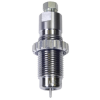
|
32 SW Long/32 Mag/32 ACP Carb | Midsouth Shooters Supply | $ 22.99 |
|
References:
1. Hill, B. (2017). The Colt Model 1903 Pocket Hammerless: History, Features & Review. Gun Digest.
2. Stimson, W. (2008). The Semi-Automatic Pistol: A Complete History. Lexington Books.
3. Hogg, I. V., & Weeks, J. (2003). Military Small Arms of the 20th Century. Krause Publications.
4. Pate, D. R. (2011). The Walther PPK: History and Development of the “Gun of the Secret Service”. Gun Digest.
5. Watts, G. (2013). The .32 ACP and the Rise of Concealed Carry Pistols. Shooting Times.
About the Author:
Alan J. Chwick has been involved with firearms much of his life and is the Retired Managing Coach of the Freeport NY Junior Marksmanship Club. Escaped New York State to South Carolina and is an SC FFL & Gunsmith (Everything22andMore.com). [email protected] | TWITTER & TRUTH: @iNCNF

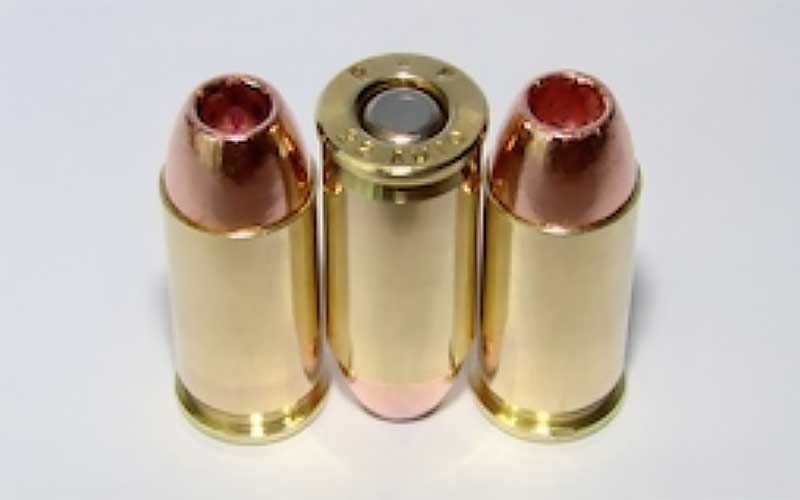
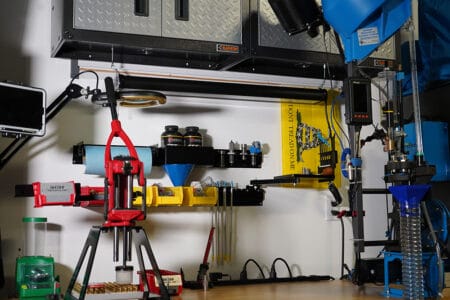
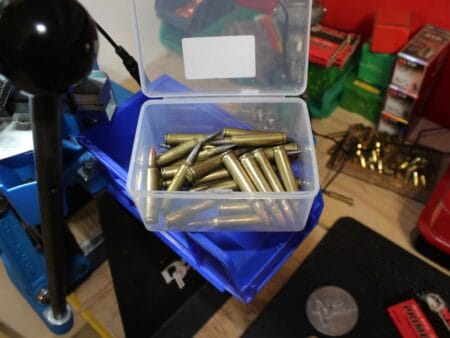
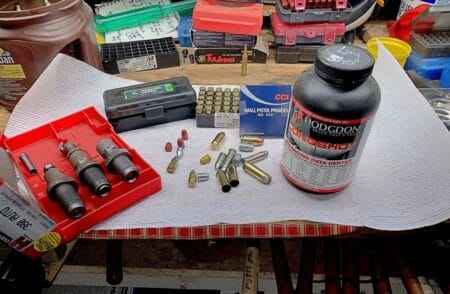
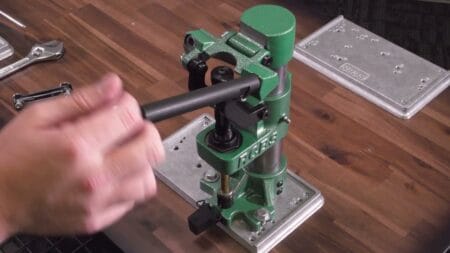
Very interesting article.
My condolences to Messrs. Chwick and Mauser regarding the passing earlier this month of their co-author, Joanne Eisen.
Dave Kopel provided a reflection on the significance of “her scholarship and writing in support of human rights, particularly self-defense.” at the Volokh Conspiracy.
https://reason.com/volokh/2025/01/09/the-great-joanne-eisen/?comments=true#comments
Further, here’s a link to a compendium of the work product of all three authors, as well as Joanne’s work with Paul Gallant and his wife, Sherry Gallant, and others.
https://gallanteisen.incnf.org/
P.S. Makes me wonder what I have been doing with my free time.
Some years ago, I experienced this with the tiny Kel-Tec .32ACP pistol. I had fired it many times before without incident, but this time was using some hot Cor-Bon ammo. As I recall, the gun was jammed up terribly. When I was able to extricate the magazine from the gun, I had to disassemble the mag (via the base plate) to get everything right again. I tried this a couple more times with the same results. The rangemaster at the indoor range I was at correctly identified the issue as “rim lock”. I liked the noticeably hotter Cor-Bon loads but… Read more »
I have to put this article in my memory bank, what’s left of it.
A friend told me that he reloaded the 32 Auto with 85 and 90 grain bullets.
Gun functioned great and a little more stopping power.
There is a wildcat cartridge 32-380. It would be good for some company to standardized.
Back in the 1970’s, a company made a copy of the AR-15 in 32 Auto.
There are chamber inserts to shoot the 32 Auto in 30-30, 308 Win. ,30-06.
MCA Sports in Anchorage, Alaska sells these.
Didn’t Browning like to. go plinkung with one of his 32 Autos?
I’ve yet to experience rim-lock but, then, I know better than to use hollow points – which are very unlikely to expand given the power of the cartridge (or lack thereof). They tend to clog on clothing and penetrate far less than FMJs. I have shot some at the range because I got a bargain on them but when actually carrying a .32 I load only ball.
Interesting article.
I’ve never had this issue with my 1942 Walther PP. I’ve put well over 1000 rounds of several different brands, bullet weights and types through it. It’s been an exceptional firearm and I carry it in certain situations.
IMOA, the picture of the ammo shows the COL being longer than the others. I would think the bullet is now making contact with the lands and grooves preventing the round from chambering properly. The author never mentions the ammo mfg. or whether the HP ammo his friend was using had been checked with a micrometer for COL. Reseating the bullet deeper may fix the jam issue.